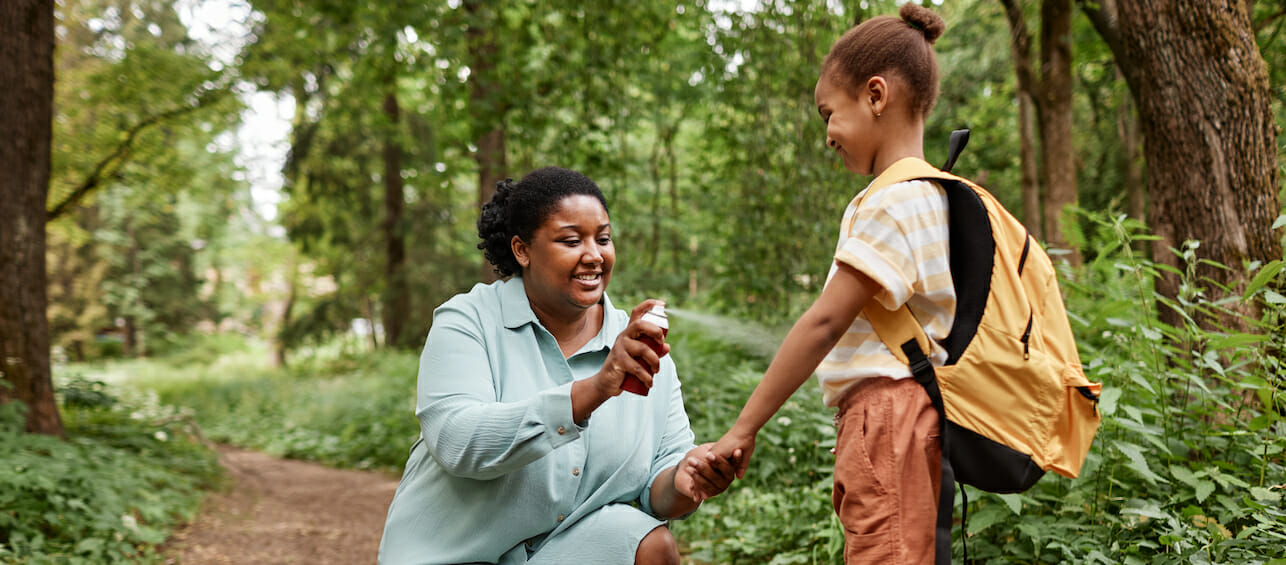Skin cancer is the most common type of cancer in adults in the United States. It is important to begin prevention measures in childhood because just one blistering sunburn before the age of 18 more than doubles kids’ chances of developing melanoma in adulthood. Melanoma is the most serious form of skin cancer and can develop anywhere on the body.
Sunscreen, when applied correctly, is one of the most effective tools to help protect their skin. But it isn’t the only one, and should be combined with other sun-safety methods.
As a pediatric dermatologist, I’d like to share some steps you can take to enjoy all that summer has to offer while still shielding your family’s skin from the sun’s harmful UV rays:
9 Sun Safety Tips for Kids
-
Apply sunscreen
- Rub on 20 minutes before going outside.
- Use UVA and UVB broad-spectrum sunscreen with SPF 30 or greater (these filter out 97% of sun’s UVB rays).
- Look for sunscreens with zinc oxide +/- titanium dioxide and as high a zinc level as possible, as they tend to be less irritating.
- Use water resistant sunscreen if your child will be swimming, sweating, or playing in the water.
- Reapply (including water resistant sunscreens) every two hours, even on cloudy days. This is especially important when swimming or sweating.
-
Cover their skin with clothing
- Try sun protective clothing with UPF 50 (sunprecautions.com and llbean.com are examples) or lightweight, long-sleeved pants or shirts with a tight weave.
- Wear a hat with a 3-inch brim to cover head, ears and neck.
-
Wear sunglasses
- Wear sunglasses whenever they’re outside, including when playing sports.
- Find sunglasses with UV protection, which can be added to prescription glasses or contact lenses.
-
Limit direct exposure to sunlight
- Avoid direct sunlight between 10 a.m. to 4 p.m., which is when the sun’s rays are the strongest and most damaging.
- Find shade from trees, shadows, shelters.
-
Take extra precautions with babies
- Babies under the age of six months should stay out of direct sunlight.
- Use sunscreen with titanium dioxide or zinc oxide, which is less likely to irritate their skin. I use a zinc oxide-based sunscreen stick on my four-month-old when we are sitting outside.
-
Be mindful of some medications
- Some medications can make your child more susceptible to sunburns. This includes antibiotics such as doxycycline and acne creams like adapalene and tretinoin.
-
Avoid tanning beds and tanning in general
– Tanning beds are not safe and are a leading cause of melanoma in young women. -
Keep an eye on their skin
- Examine skin every 2-3 months. It is normal to develop new moles over time.
- Notify your child’s doctor if you observe changes in size, shape, color or texture of any existing moles, as well as itching pain, bleeding, irritation or scabbing.
- Freckles are a sign of too much sun. If your child has them, make a point to use more sunscreen in those areas and put on a hat.
-
Educate others
- Talk with those who are with your children when you’re not, such as camp counselors, coaches and other caregivers, about following the above guidelines.






Awesome tips. I will make sure I follow these tips to keep my family’s skin healthy this sunny summer. I’ve also made sure that my children increase their water intake. Drinking at least 8 glass of water a day is a must in summer.